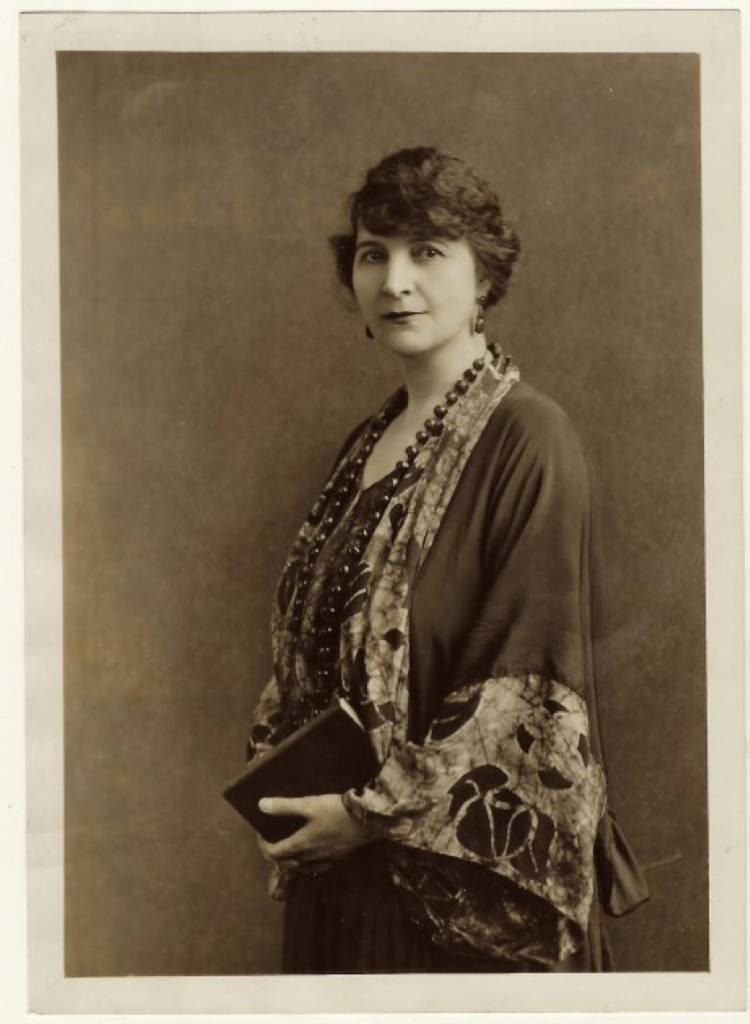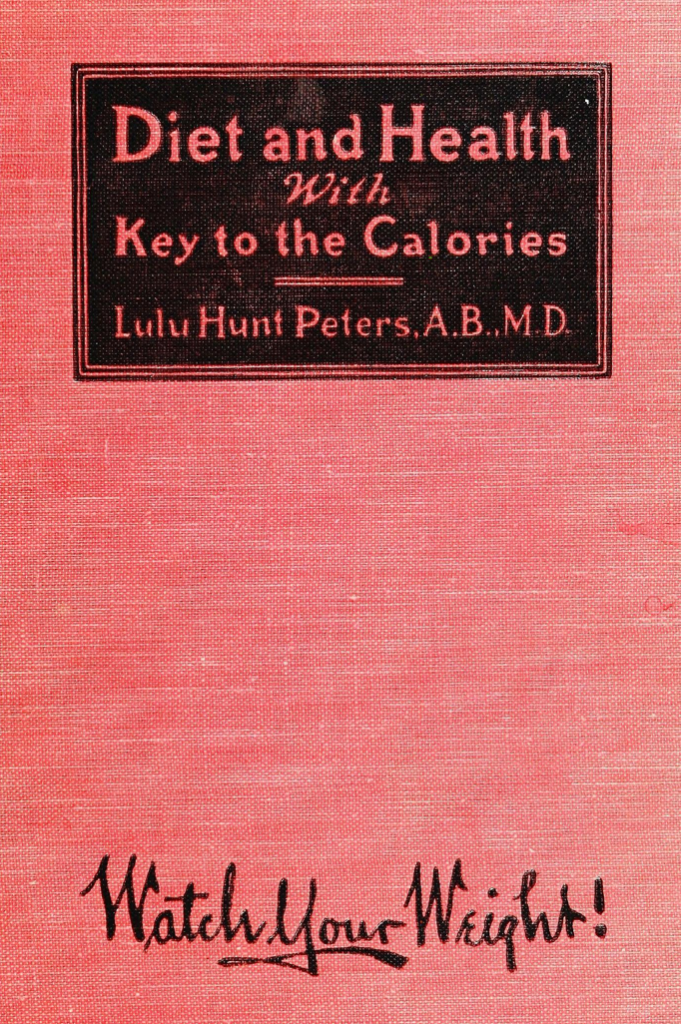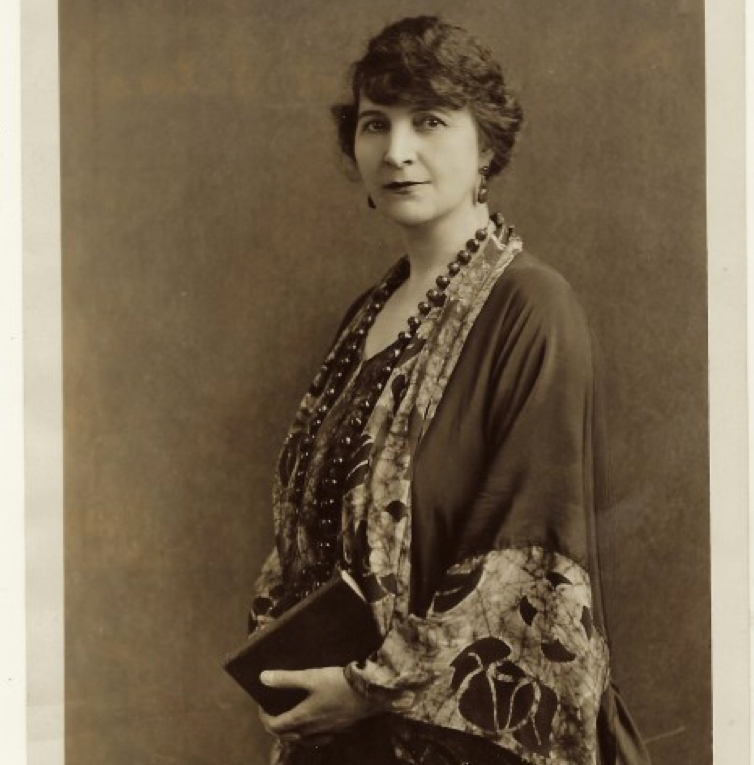Heroes and Villains No. 2 Lulu Hunt Peters
Don’t eat food, eat calories

California 1918: By the end of the First World War Lulu Hunt Peters, an east coast girl, had graduated in medicine from west coast Berkeley and published her landmark book ‘Diet and health (with key to the calories)’. A footnote on the book’s front cover exhorted its readers to ‘Watch Your Weight!’ a sentiment echoed throughout the text. Lulu was a large lady weighing nearly 16 Stone (just over 100Kg) when she decided to do ‘something’ about it. She dieted, her weight dropped and she, like William Banting before, felt compelled to share the good news of her success with the world at large. That ‘something’ was in part to advise women (and it was women she mainly wrote for) to lose weight by eating less. But Dr Peters’ unique selling point was not just that she said eat less, but that she introduced the world of nutrition and the general public to the concept of the calorie. ‘Don’t eat food, eat calories’ might be a simplification of her message. And it worked for her. Peters’ book, which is still in print, is a difficult read for the modern student. Her style is direct but her delivery is jerky, leaping from point to point almost as if her hasty notes had dodged the editing stage before publication. Never the less her book was well received and at the time became very influential. Lulu Hunt Peters might probably be considered the Mother of the Calorie control diet.
Peters’ unique selling point was simply this; she believed that how our bodies work, where we get our vital spark from, how energy flows and balances within our bodies, how the human system functions, is just like a machine. What could be simpler than that? She had encountered a clear and simple explanation for the complexities of the human body’s energy systems. But as the American essayist HL Mencken once famously wrote… For every complex problem there is an answer that is clear, simple and wrong.
It seems probable that Peters was informed in her views on nutrition and calories by an influential publication by Professor WO Atwater. His booklet “Principles of nutrition and nutritive value of food” was produced on behalf of the US Department of Agriculture in 1906 and reprinted in 1910. In it, Atwater stated, in a section subtitled the body as a machine, that “If more food is eaten than is needed, more or less of the surplus may be and sometimes is stored in the body, chiefly in the form of fat”. He goes on to say that “the heat given off in the oxidation of a given quantity of any material is called the heat of combustion… the unit commonly used is the calorie… This is in accordance with the law of conservation of energy”. Atwater went further, describing the calorific values of fats, protein and carbohydrates and advised that “The evils of overeating may not be felt at once, but sooner or later they are sure to appear – perhaps in an excessive amount of fatty tissue’. What is interesting about this authoritative advice written over a century ago is that it could almost be pasted verbatim into a contemporary diet advice sheets.

Professor Wilbur Atwater and Dr Lulu Hunt Peters had clearly not heard of William Banting whose simple and yet successful solution to corpulence was not about the quantity of food eaten, nor down to energy/calorie restriction, but rather about the nutritional or chemical qualities of the food. Avoid eating what he likened as ‘beans to a horse’ in other words. Instead, ensure you eat the right types of food for your body. Unlike Atwater and Peters, Banting advised care with the quality or types of food eaten, not its quantity or calorific load.
Lulu Hunt Peters did lose weight and so did many of her followers. But here is another thing about diets. All diets work for someone, even the whacky ones (diets that is), and yet no one diet appears to work for everyone. There does not appear to be a single universal healthy weight controlling diet out there. This should not come as a surprise, biology is after all inherently and invariably variable. But to cling to the notion that ‘a calorie is a calorie is a calorie’ when even rigorously observed prolonged starvation fails to support the arithmetic is unsatisfactory (to be discussed later when Dr Ancel Keys gets his turn in the hot seat). All this is not to say that calories are totally irrelevant. But when looking at health and weight the qualities of the foods consumed (especially its carbohydrate qualities) would appear to be far more important than simply its quantity; the total blind sum of its calories. It is not a zero-sum thing.
Actually, I suspect Dr Peters’ Unique Selling Proposition “don’t eat food, eat calories” may not have been the true cause for the success of her diet. The meal plans listed in her book are in fact pretty low-carb. These include plenty of salad vegetables (mostly raw), fruit, meat and fish. There are several rounds of toast, the occasional piece of bread and a few pretzels. But there is no pasta, pizza, cake, biscuits or rice. No fruit juices, no smoothies. There is an occasional slice of pie or a little potato in a chowder recipe for example, but otherwise Lulu’s is in fact a pretty low-carb’ diet programme. Is this an example perhaps of mistaken assumptions and incomplete knowledge? The Her diet seemed to worked but not perhaps for the reasons she thought it did.
(picture credit: Wikipedia)

